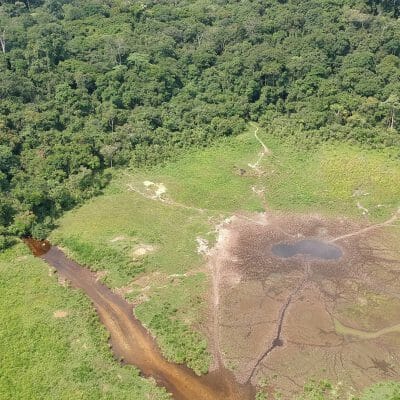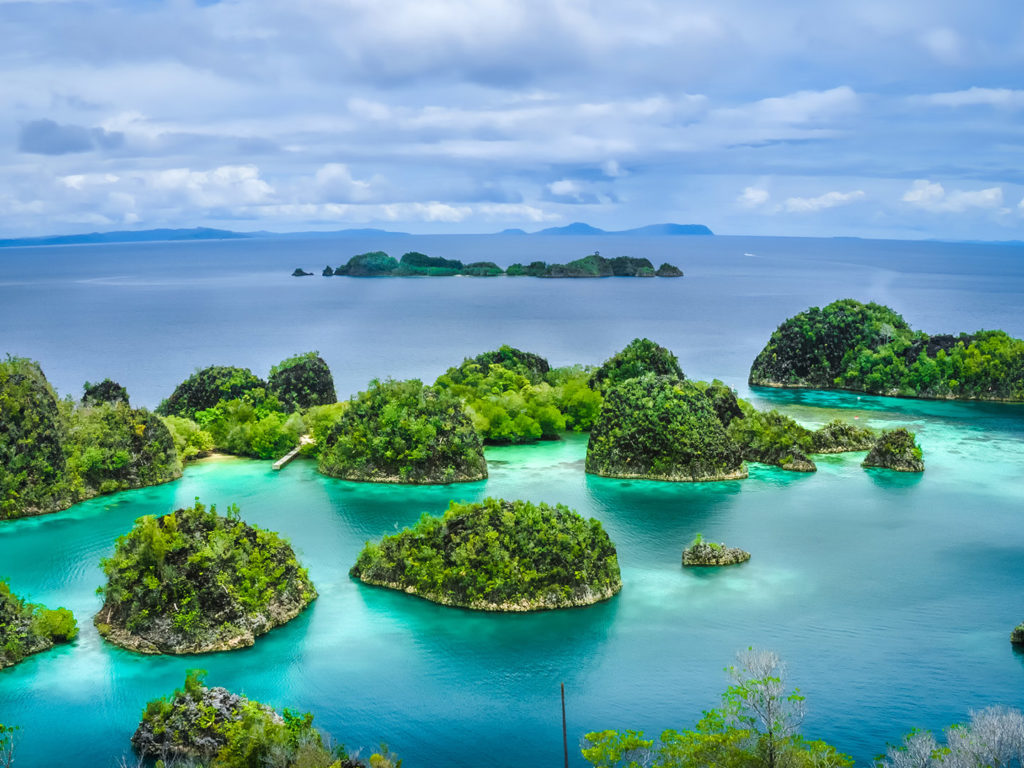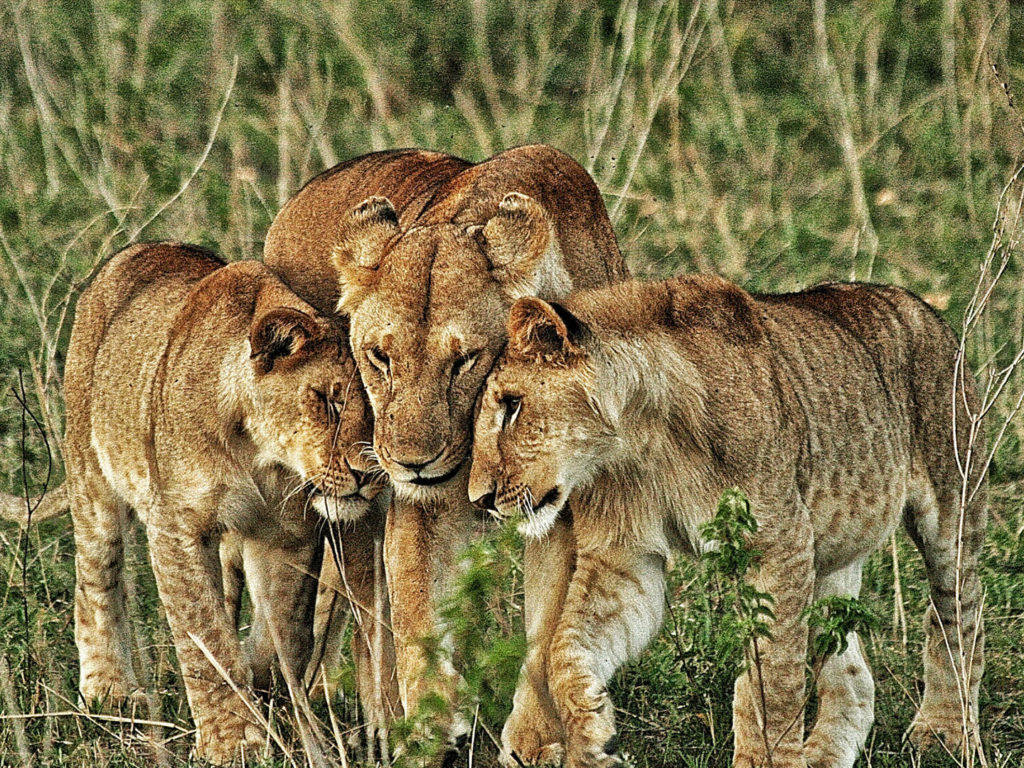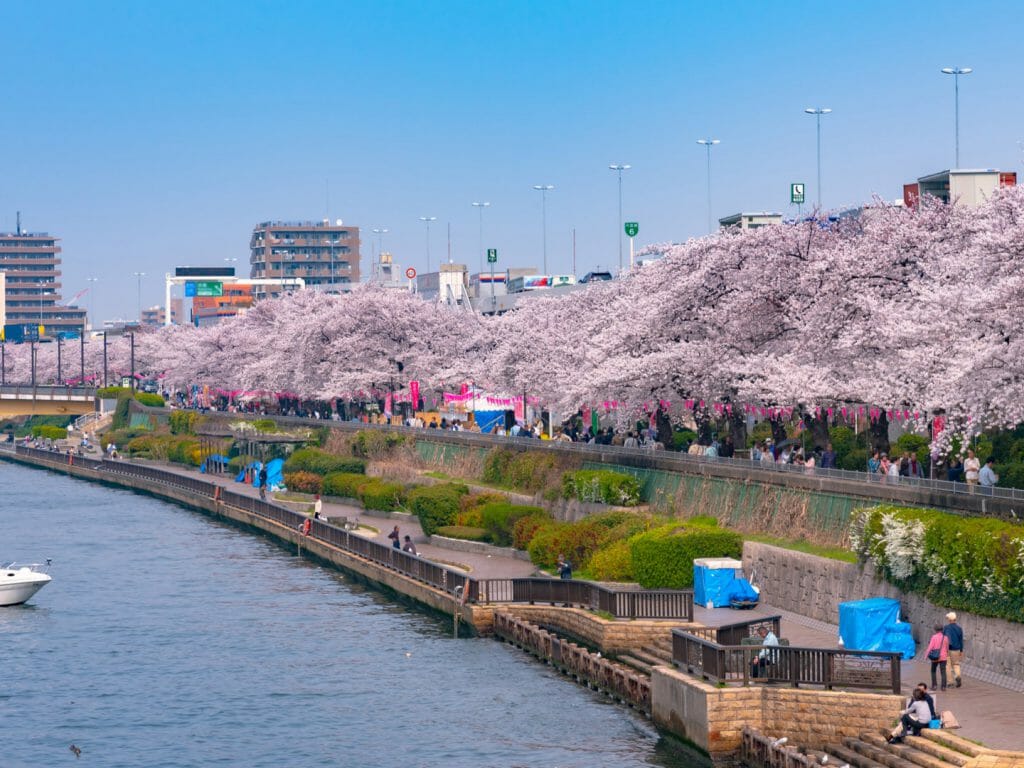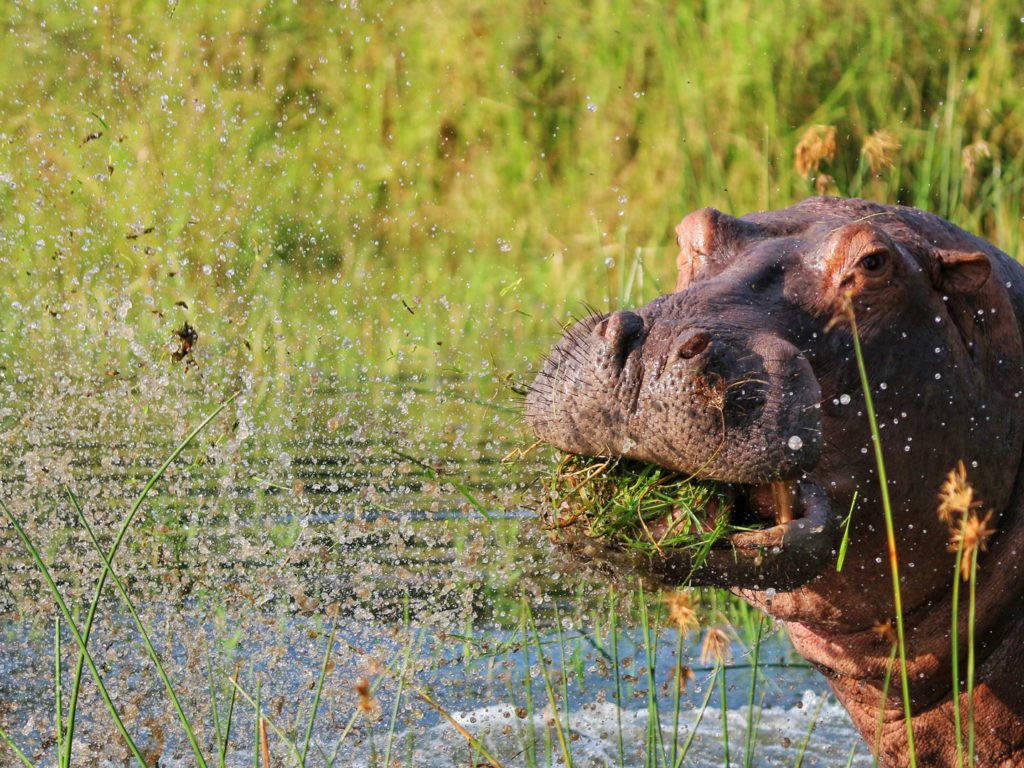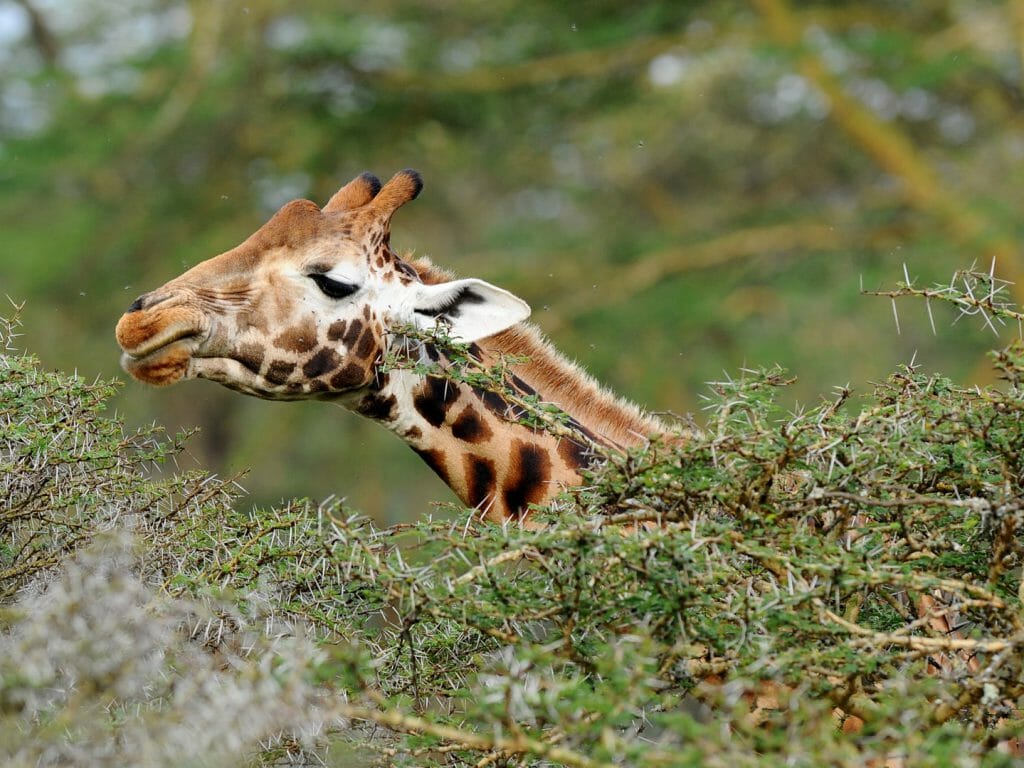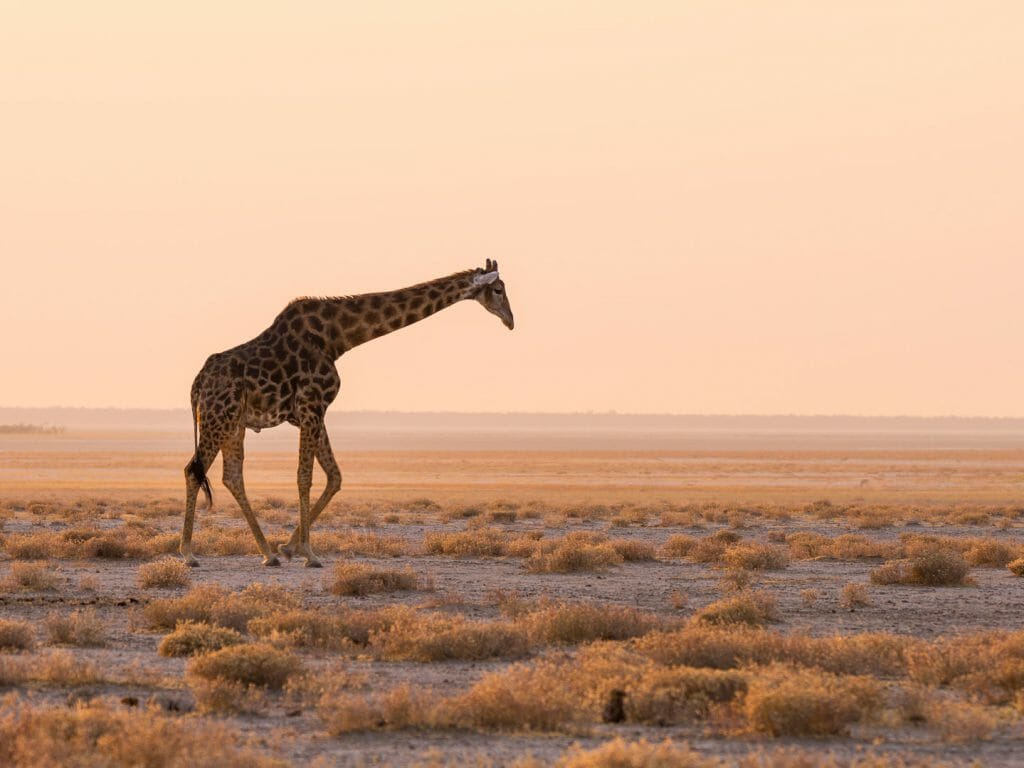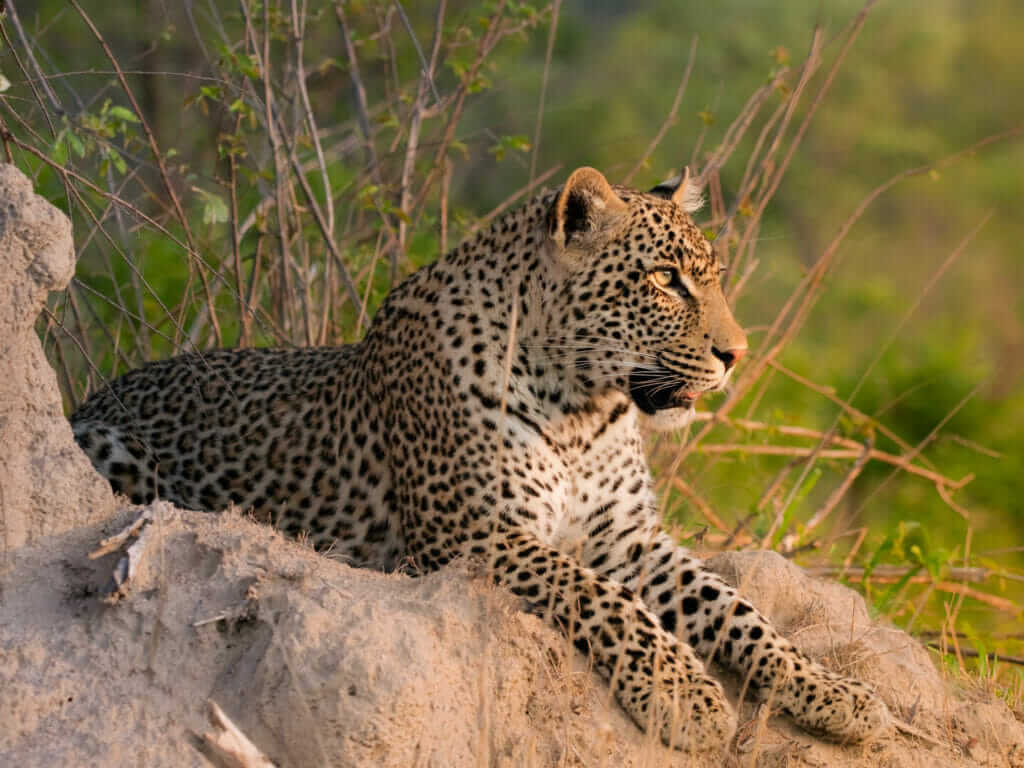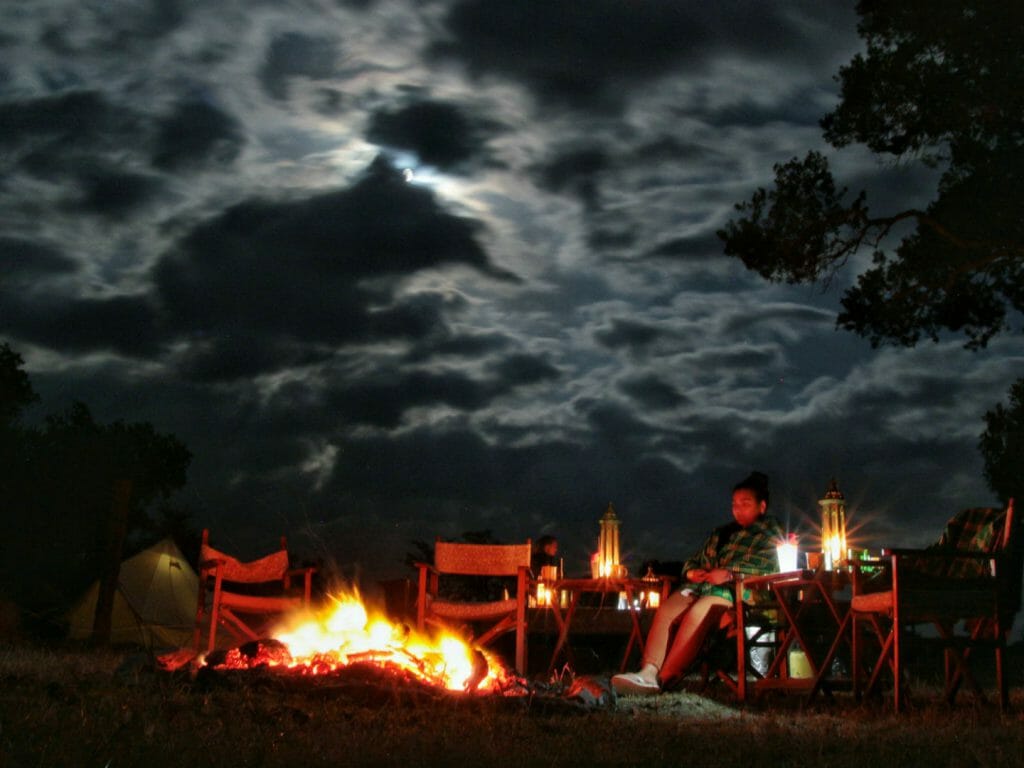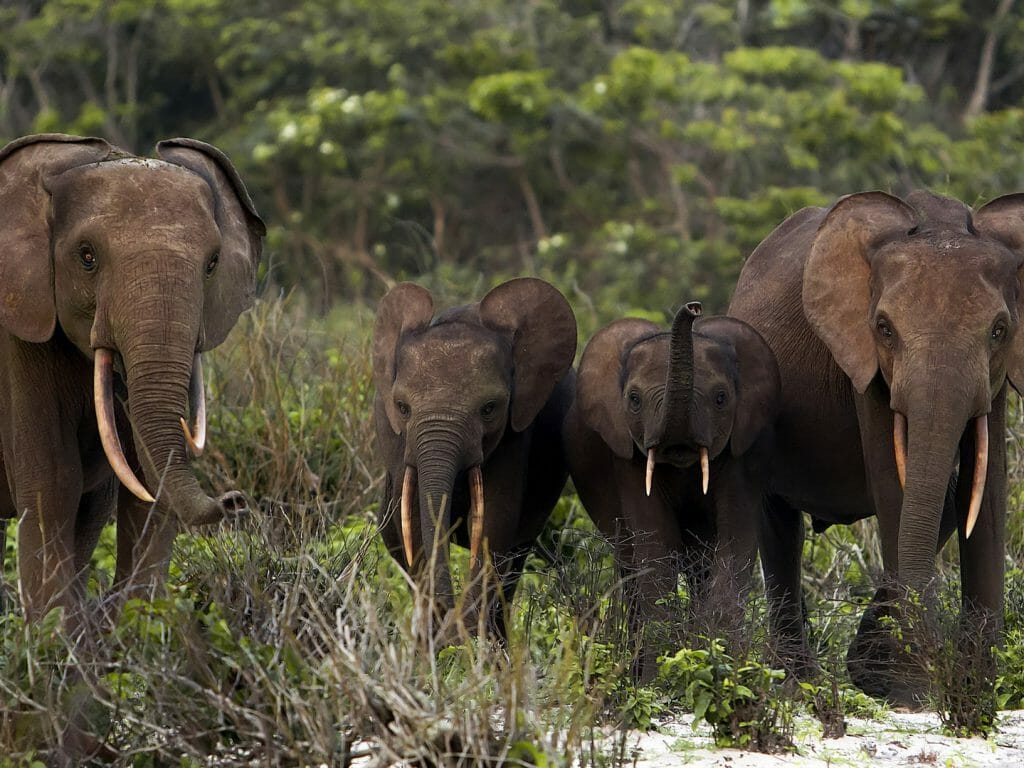Sweat bees tickle the skin on my forearms. The perspiration lies there in beads, feeding their thirst. My heart is still pumping in my chest from the walk, at odds with the stillness surrounding me. The humidity presses on me, but it is the sense of expectation that weighs heavier upon my tired body.
The sight in front of me is not immediately stunning. But far fewer pairs of eyes have absorbed this view than pairs of feet have stood on the peak of Mount Everest. And I am one of the lucky few.
This is Gabon’s Langoue Bai, a great jungle clearing at the heart of the dense rainforest that still covers much of the Congo Basin. Hidden deep within Ivindo National Park, this natural parting of the forest holds mineral-rich soil that attracts all kinds of forest wildlife.
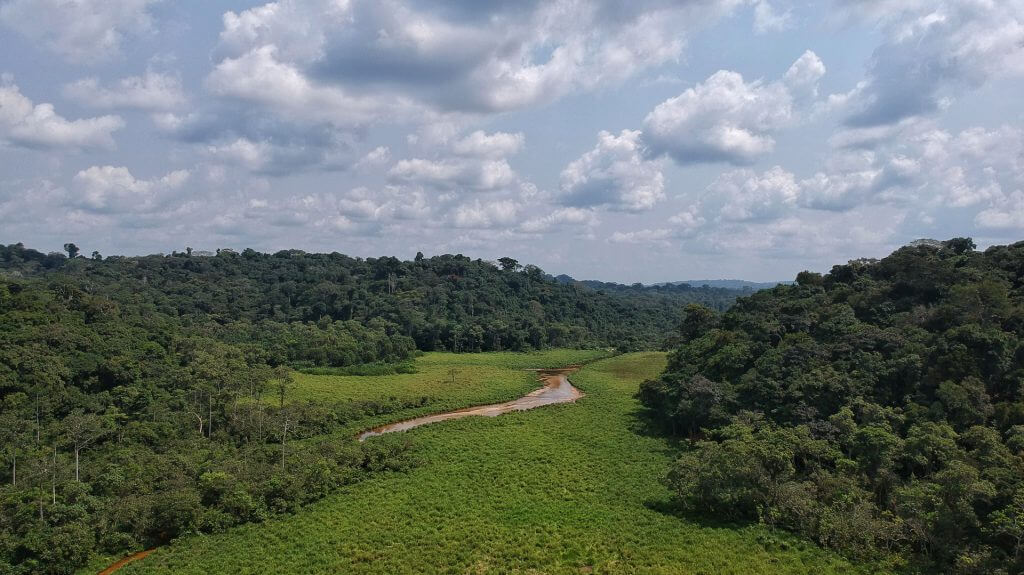
Few have ever made it to this hard-to-reach place, but I’m here in the company of 10 fellow travellers – the first group that Steppes have ever sent. All of them understand the unpredictable nature of the Central African rainforest and how far off the beaten track we have come. Tourism is so unheard of here that we are the largest group to ever visit the bai.
We have just arrived and are sitting on the top level of the three-storey wooden research platform that faces the vast bai. Beneath us, wide-leafed grasses, crisscrossed by narrow animal pathways, extend towards a sandy-bottomed river.
On the other side of the river, patches of shorter grass appear and, to the left, a wide circle of dark mud breaks up the sea of green. Tracks lead into this quagmire from every angle. Beyond this, the forest suddenly reappears – a wall of ancient trees rising impenetrably. Amidst this tangle of leaves and trunks, the occasional titan rises above the canopy, towering over its neighbours.
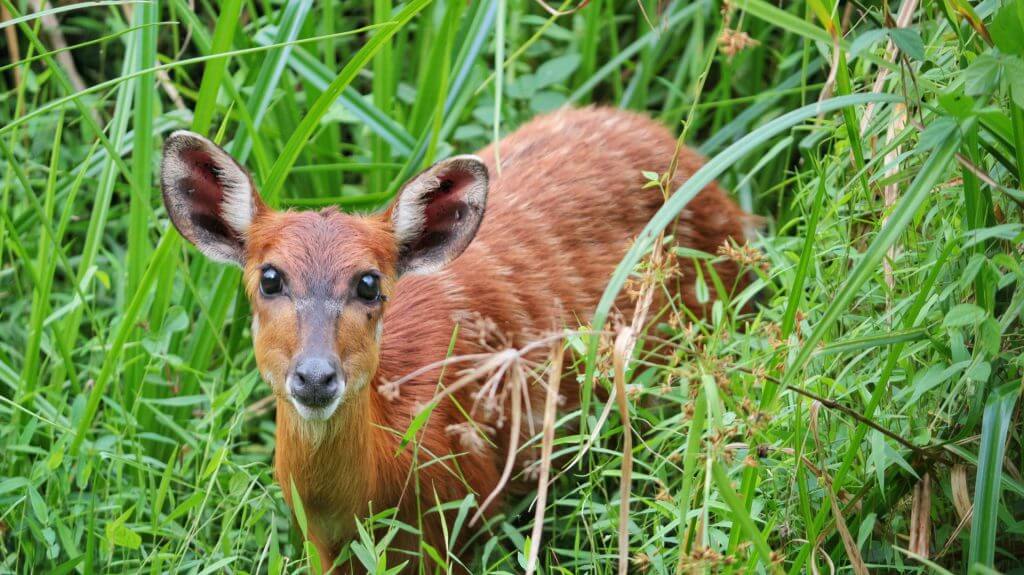
The scene is lit by the soft, dusky light of approaching sunset. We have made it with just an hour of daylight left. Already, we have company. Their bellies resting on soft mud, legs invisible, a pair of deep-red forest buffalos wallow in contented silence. And, at infrequent intervals, the thick grasses in front of us rustle and part, exposing a sitatunga antelope’s head or rump for a few seconds.
Both of these animals are rarely seen elsewhere, but we know this forest hides more secrets. As the sky begins to darken, expectation mounts. This is a waiting game. There is no searching for wildlife in jungle this thick; we can only hope it comes to us.
Suddenly, the trees to our left shake slightly. And, surprisingly quietly, the first forest elephant emerges. Followed by several more, it ambles out into the clearing, making a beeline for the mud. A shiver of excitement passes through the group and we are suddenly transfixed by these new and unusual visitors.
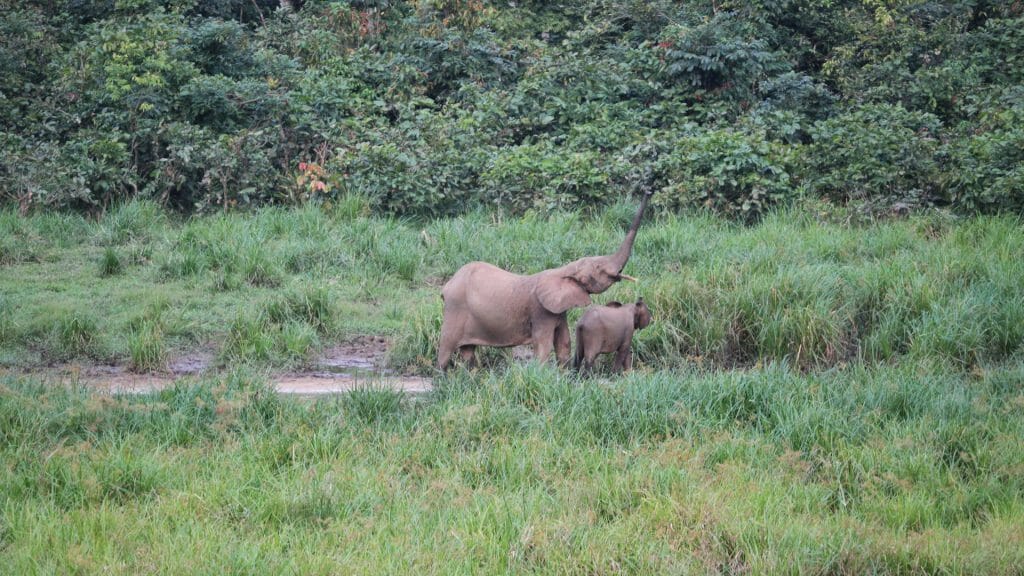
Far more diminutive than their savannah cousins, forest elephants are also more solitary, more skittish and more difficult to spot. Once, they roamed across all of Equatorial Africa, but conflict, deforestation and poaching have dramatically reduced their numbers. Now, they largely survive in the jungles of Gabon, hidden from sight.
This small family make a beeline for the bai’s rich mud, digging their trunks into the dark, wet earth. Then they wander down the river, passing in front of us. Trunks waggle in the air, perhaps picking up our unfamiliar scent. But they continue unfazed, as darkness slowly descends on the jungle.
When the night is fully upon us, we lay down to sleep on the tower’s deck. The sounds of elephants still occasionally echo across the clearing.
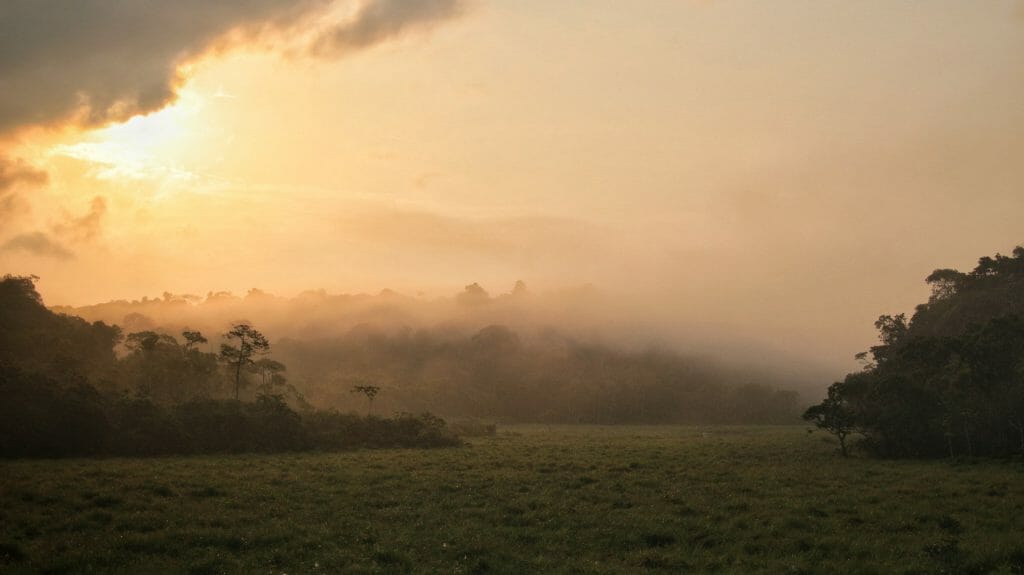
The next morning, I awake as the first rays of sunlight fall upon the tent’s thin walls. I blink against the brightness and look out at the bai. A carpet of white mist hangs over the jungle clearing. Overhead, wispy clouds meet the nearest forested ridge, as the sun slowly begins to burn away the moisture, casting an orange glow over the stillness.
Sipping a mug of hot, black coffee, I listen as Adriana – fluent in French – chats to one of the park rangers. He tells her that, although forest elephants generally move in small families, he has seen congregations of more than 40 in the bai at one time.
She goes on to ask him about our chances of seeing gorillas. These forests are thought to be home to tens of thousands of lowland gorillas but seeing them is almost impossible. He tells us that if the gorillas make an appearance, it will be between 09:00 and 10:00. The reason behind this precise timing is lost in translation. But, as the clock strikes 09:00, our senses sharpen.
After 55 minutes of total silence, our hopes are fading. Orange and black butterflies flutter around the tower and palm-nut vultures swoop overhead, but there is no sign of the gorillas.
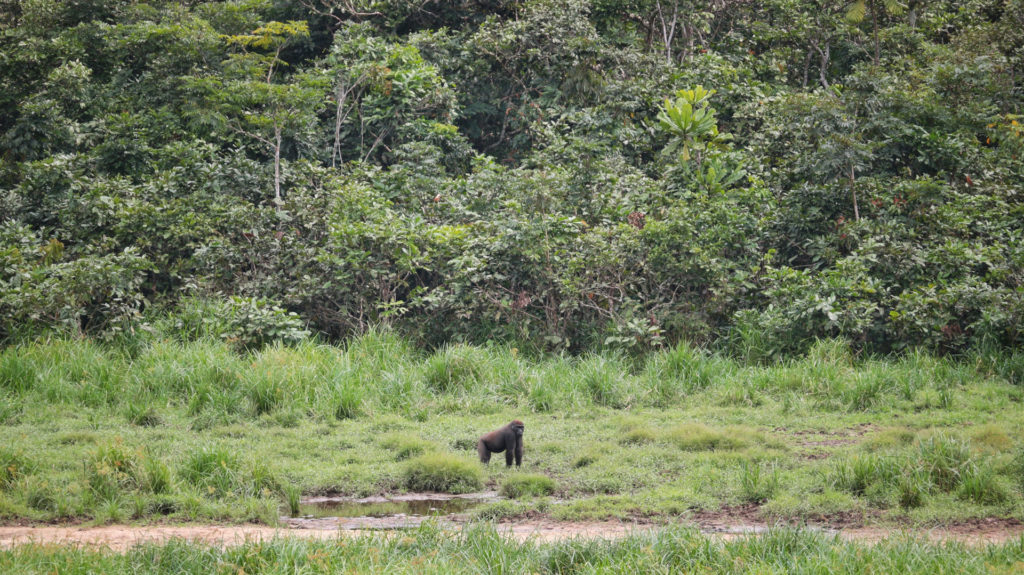
Then a sharp whisper breaks the tension: “Les gorilles”. A black shape bounds out of the trees, almost directly opposite the platform. It is followed by five companions. Playing, tumbling and occasionally backtracking, they make their way down to short grasses behind the far riverbank.
I cannot quite believe what I’m looking at. In front of us is a family of western lowland gorillas. These are unhabituated animals, completely unused to the presence of humans. There are only one or two other places in Africa where this is possible. Once again, our patience has been rewarded.
They never come close, but the family plays in front of us for almost two hours. It is fascinating to watch. I have encountered habituated mountain gorillas before – getting within touching distance – but there is something far more visceral and wilder about this experience, despite the distance.
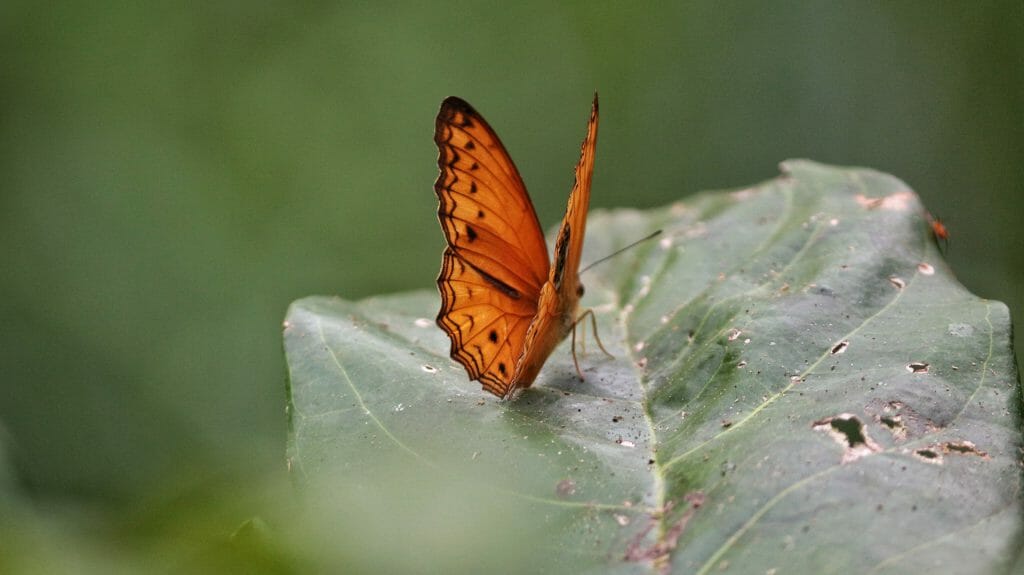
Eventually, the gorillas disappear back into the trees, leaving the bai feeling empty once more. The bright blue of a turaco flashes in the canopy on the far side, but then a stillness descends on the bai.
And this stillness continues. A curious sitatunga ventures within metres of the tower, but that is the action over for the day. The forests around us contain countless birds and animals, but seeing them is simply a waiting game.
It is lunchtime on the following day, after gorilla hour has come and gone, that the jungle springs one last surprise for us. Looking to our right, away from the bai, we can see a wide bend in the river. Suddenly, the shallow water splashes and is filled with a dark, shifting mass.
Through binoculars, I spot fast-moving little legs and white-striped faces. This is a family of red river hogs – another elusive forest species – making its way up the river, towards the bai. They move in a scurrying mass of bodies, travelling at a surprisingly rapid pace.
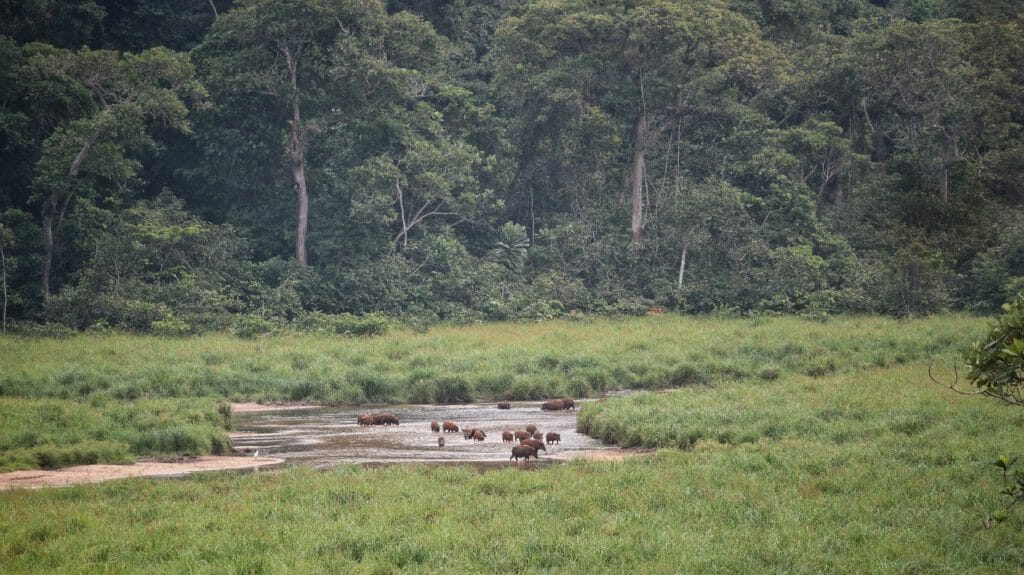
There must be 20 animals in the family, which consists of both adults and juveniles. They continue their journey right into the muddiest section of the bai, where they wallow happily, turning their reddish bodies a much darker brown.
The midday sun is strong above the now-muddy assortment of pig-like bodies. This is at odds with accepted safari wisdom – these hogs don’t seem to know the dawn-or-dusk schedule. But that is part of the magic here: nothing is predictable.
Langoue Bai will tear up your predictions and test your patience. It will leave you tired and sweaty. But it will also reward you with sights that few others have seen. Make the effort to come here but leave your expectations at home. Sit in silence. Simply enjoy the view and wait. Because the jungle rewards those who wait.
